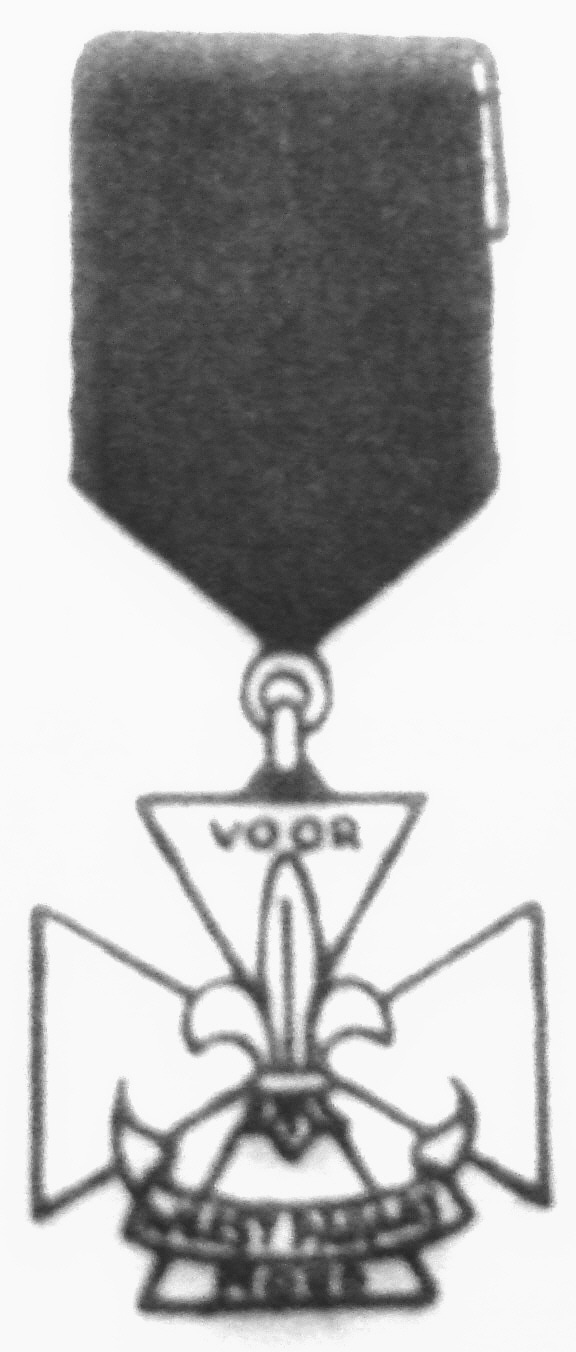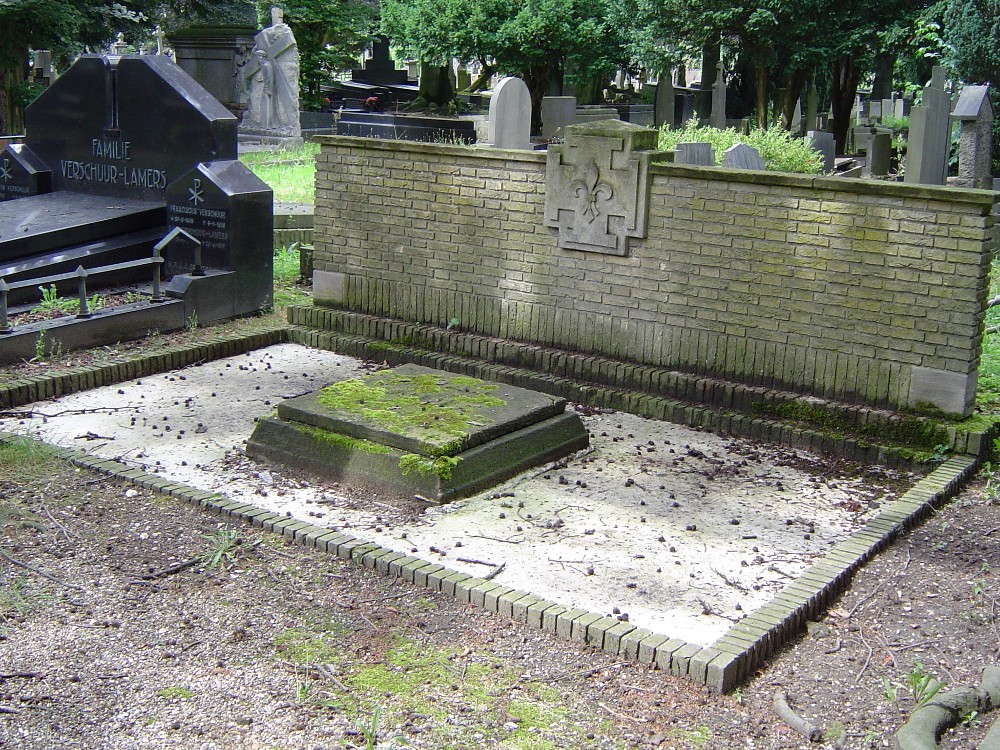Jan van Hoof on:
[Wikipedia]
[Google]
[Amazon]
Jan Jozef Lambert van Hoof (7 August 1922 – 19 September 1944) was a member of the Dutch resistance in
 Van Hoof was posthumously awarded:
* 1945:
Van Hoof was posthumously awarded:
* 1945:

 These monuments and graves are dedicated to Jan van Hoof.
* Nijmegen,
* Nijmegen, 'honour grave' of Jan van Hoof
* Nijmegen, monument on the Waal Bridge
* Nijmegen, monument at the Joris Ivensplein
* Nijmegen, Dutch War Cemetery
These monuments and graves are dedicated to Jan van Hoof.
* Nijmegen,
* Nijmegen, 'honour grave' of Jan van Hoof
* Nijmegen, monument on the Waal Bridge
* Nijmegen, monument at the Joris Ivensplein
* Nijmegen, Dutch War Cemetery
Left Handshake
by
Jan van Hoof
Article about Jan van Hoof, by
Biography of Jan van Hoof
Website: Oorlogsdodennijmegen.nl {{DEFAULTSORT:Hooft, Jan Van 1922 births 1944 deaths Dutch resistance members People from Nijmegen Resistance members killed by Nazi Germany Scouting and Guiding in the Netherlands Dutch people executed by Nazi Germany Executed Dutch people People executed by Nazi Germany by firearm Knights Fourth Class of the Military Order of William Recipients of the Medal of Freedom Recipients of the Queen's Commendation for Brave Conduct Dutch civilians killed in World War II
World War II
World War II or the Second World War, often abbreviated as WWII or WW2, was a world war that lasted from 1939 to 1945. It involved the vast majority of the world's countries—including all of the great powers—forming two opposin ...
, who cooperated with Allied Forces during Operation Market Garden
Operation Market Garden was an Allies of World War II, Allied military operation during the World War II, Second World War fought in the Netherlands from 17 to 27 September 1944. Its objective was to create a Salient (military), salient into G ...
. He is credited with disabling explosives placed by the Germans to destroy a vital bridge to delay allied liberation, and was later executed in action. Before and during the war, Van Hoof was a Rover Scout
Rover Scouts, Rovers, Rover Scouting or Rovering is a program associated with some Scouting organizations for adult men and women. A group of Rovers is called a 'Rover Crew'.
Rovers was originated by The Boy Scouts Association in the United K ...
, and the Scouting medal the Nationale Padvindersraad was named in his honour.
Story of Jan van Hoof
Before the war he was aBoy Scout
A Scout (in some countries a Boy Scout, Girl Scout, or Pathfinder) is a child, usually 10–18 years of age, participating in the worldwide Scouting movement. Because of the large age and development span, many Scouting associations have split ...
with the Katholieke Verkenners
Scouting Nederland is the national Scouting, Scout organisation of the Netherlands with approximately 110,000 members (53,324 male and 54,663 female, 87,000 youth members, as of 2010.
The official patron of Scouting Nederland is Queen Máxima of ...
(Catholic Scouts). During World War II
World War II or the Second World War, often abbreviated as WWII or WW2, was a world war that lasted from 1939 to 1945. It involved the vast majority of the world's countries—including all of the great powers—forming two opposin ...
Scouting
Scouting, also known as the Scout Movement, is a worldwide youth movement employing the Scout method, a program of informal education with an emphasis on practical outdoor activities, including camping, woodcraft, aquatics, hiking, backpacking ...
was forbidden in most occupied countries. All the Scouting organizations were to be integrated into the Nationale Jeugdstorm
The ''Nationale Jeugdstorm'' (English: National Youth Storm; NJS) was a Dutch youth movement associated with the National Socialist Movement in the Netherlands (NSB) that existed from 1934 to 1945, organized as the Dutch equivalent of the German ...
(NJS), the Dutch version of the Hitler Youth
The Hitler Youth (german: Hitlerjugend , often abbreviated as HJ, ) was the youth organisation of the Nazi Party in Germany. Its origins date back to 1922 and it received the name ("Hitler Youth, League of German Worker Youth") in July 1926. ...
. However, the Dutch Scouting organisations did not agree with the terms of the NJS and as a result went underground, with some joining the resistance.
Jan van Hoof joined the resistance. Shortly after the occupation of the Netherlands by the Nazis
Nazism ( ; german: Nazismus), the common name in English for National Socialism (german: Nationalsozialismus, ), is the far-right totalitarian political ideology and practices associated with Adolf Hitler and the Nazi Party (NSDAP) in Na ...
, he became a member of a Rover crew and in the spring of 1943 was secretly installed as full Rover Scout. During the occupation he made observations and drawings of key locations, especially the Waal Bridges. With the arrival of Allied troops during Operation Market Garden in September 1944 he used his local knowledge to guide the Allies during the Battle of Nijmegen
The Battle of Nijmegen, also known as the Liberation of Nijmegen, occurred from 17 to 20 September 1944, as part of Operation Market Garden during World War II.
The Allies' primary goal was to capture the two bridges over the Waal River at N ...
.
It was said that he disarmed the explosives attached to the Waal Bridge during the fighting, though there were no witnesses. After this, he went home and told his sister 'the bridge is saved'; he then returned to the American unit and resumed guiding them through the city. Enquiries after the war could not positively identify Van Hoof as the individual who cut the wires to the bridge, however circumstantial evidence backs up the claim, and when the Germans eventually tried to blow the bridge, just before its capture, their attempts failed.
The Dutch resistance members wore distinguishing armbands so they could be recognised as soldiers. The Germans however saw this as a provocation and did not recognize them as combatants.
On 19 September, van Hoof was riding on the top of a British Guards Armoured Division
The Guards Armoured Division was an armoured division of the British Army during the Second World War. The division was created in the United Kingdom on 17 June 1941 during the Second World War from elements of the Guards units, the Grenadier G ...
Humber Scout Car
The Humber Scout Car was a British light scout car used in the Second World War. It entered service in 1942 and continued in production until 1945. Designed for reconnaissance, and liaison between armoured units, it provided protection only a ...
, guiding the vehicle from the central post office to Allied soldiers attacking the railway bridge, when a German 2-cm gun opened fire, setting the vehicle alight. When the German troops arrived, the British crew were already dead, but van Hoof was still alive. They took his gun, identity papers and his armband
An armband is a piece of material worn around the arm. They may be worn for pure ornamentation, or to mark the wearer as belonging to group, or as insignia having a certain rank, status, office or role, or being in a particular state or conditi ...
which identified him as an official allied soldier. He was beaten and then shot through the head.
Decorations
 Van Hoof was posthumously awarded:
* 1945:
Van Hoof was posthumously awarded:
* 1945: Medal of Freedom
The Presidential Medal of Freedom is the highest civilian award of the United States, along with the Congressional Gold Medal. It is an award bestowed by the president of the United States to recognize people who have made "an especially merito ...
with bronze Palm (USA),
* 1946: Order of William
The Military William Order, or often named Military Order of William (Dutch: , abbreviation: MWO), is the oldest and highest honour of the Kingdom of the Netherlands. It is named after St. William of Gellone (755–814), the first Prince of Oran ...
Knight 4th Class (Netherlands),
* 1947: The King's Commendation for Brave Conduct with silver laurel (UK),
After the war the Honor Medal for bravery of the Nationale Padvindersraad, the Dutch Boy Scouts umbrella organisation before 1973, was renamed to ''Jan van Hoof-kruis'' in his remembrance.
Monuments dedicated to Jan van Hoof
 These monuments and graves are dedicated to Jan van Hoof.
* Nijmegen,
* Nijmegen, 'honour grave' of Jan van Hoof
* Nijmegen, monument on the Waal Bridge
* Nijmegen, monument at the Joris Ivensplein
* Nijmegen, Dutch War Cemetery
These monuments and graves are dedicated to Jan van Hoof.
* Nijmegen,
* Nijmegen, 'honour grave' of Jan van Hoof
* Nijmegen, monument on the Waal Bridge
* Nijmegen, monument at the Joris Ivensplein
* Nijmegen, Dutch War Cemetery
See also
*5th World Scout Jamboree
The 5th World Scout Jamboree (Dutch: ''5e Wereldjamboree'') was the World Scout Jamboree where 81-year-old Robert Baden-Powell gave his farewell.
Organizational details
The Jamboree in Vogelenzang, Bloemendaal in the Netherlands was opened on J ...
*Scouting memorials
Since the birth and expansion of the Scout movement in the first decade of the 20th century, many Scouting memorials, monuments and gravesites have been erected throughout the world.
Africa
Kenya
* Baden-Powell grave – Wajee Nature Park, Nye ...
References
External links
Left Handshake
by
Hilary Saint George Saunders
Hilary Aidan Saint George Saunders MC (14 January 1898 – 16 December 1951) was a British author, born in Clifton near Bristol.
Early life
He was the son of G.W. St George Saunders of Brighton and was educated at Windlesham House School, Down ...
, about Scouting during World War II
Jan van Hoof
Article about Jan van Hoof, by
Piet J. Kroonenberg
Piet J. Kroonenberg (9 May 1927 - 7 September 2016) was a Scouting historian and was the historical consultant to the European Scout Committee. He had written books and articles about Scouting during World War II and post-War Scouting in Central ...
(Dutch)
Biography of Jan van Hoof
Website: Oorlogsdodennijmegen.nl {{DEFAULTSORT:Hooft, Jan Van 1922 births 1944 deaths Dutch resistance members People from Nijmegen Resistance members killed by Nazi Germany Scouting and Guiding in the Netherlands Dutch people executed by Nazi Germany Executed Dutch people People executed by Nazi Germany by firearm Knights Fourth Class of the Military Order of William Recipients of the Medal of Freedom Recipients of the Queen's Commendation for Brave Conduct Dutch civilians killed in World War II